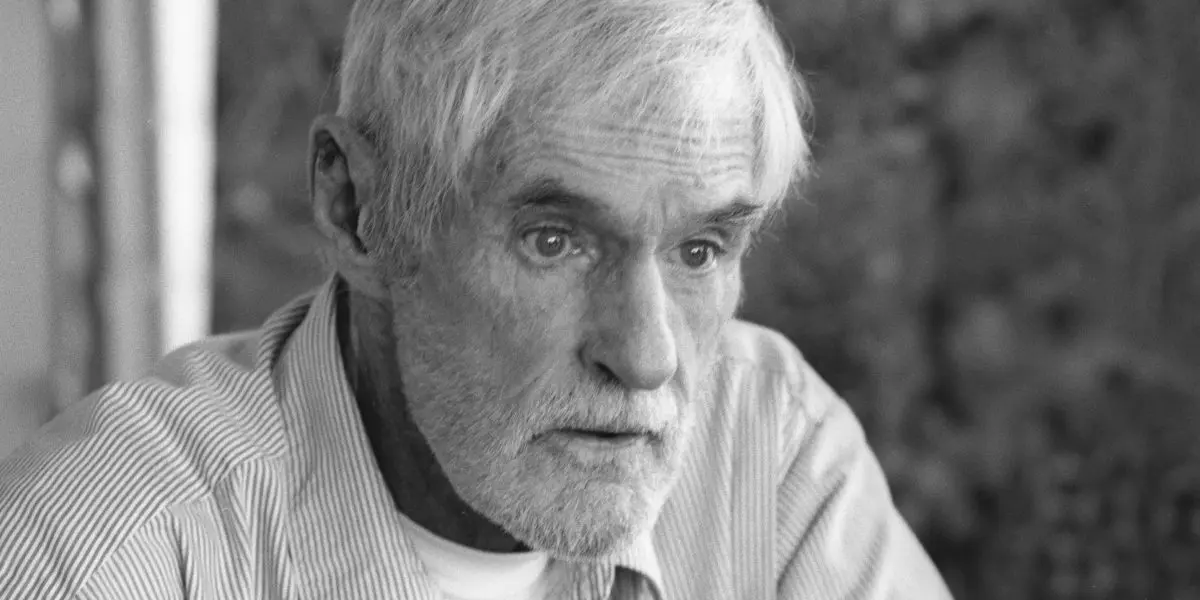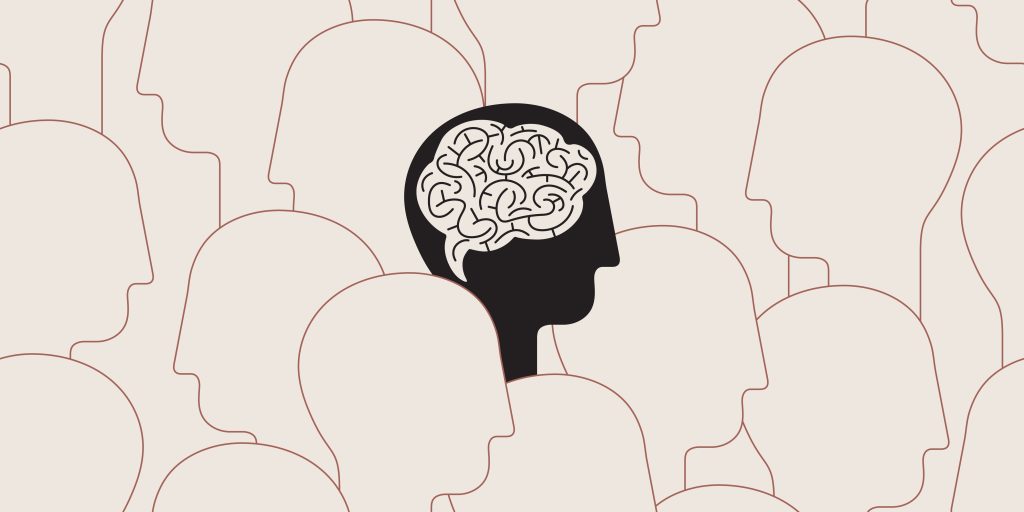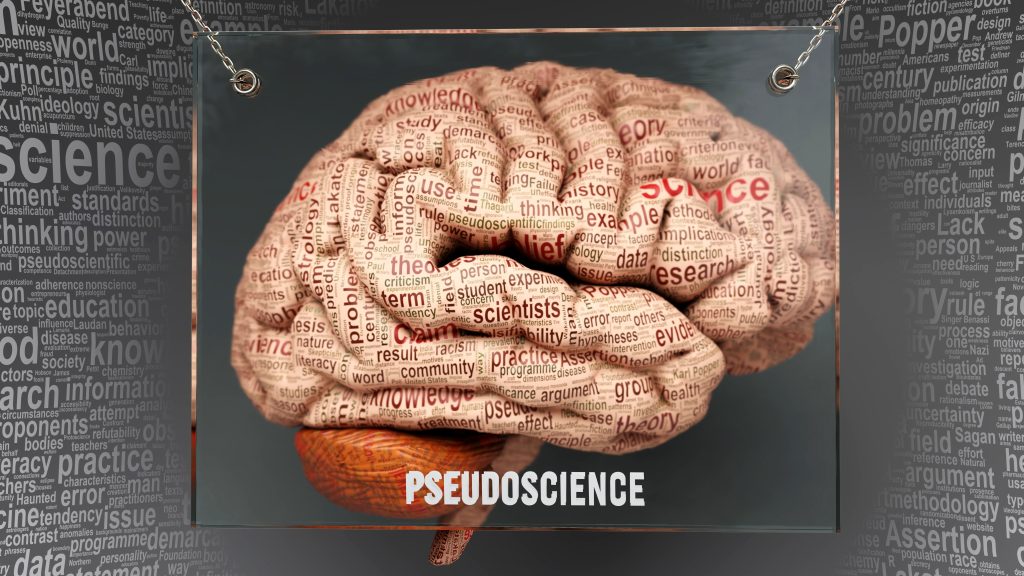
in this article
- Introduction
- An Overview of the Eight-Circuit Model of Consciousness
- Is Leary’s Model a Form of Pseudoscience?
- The Connection Between Leary’s Theory of Consciousness and Elitism
- Final Thoughts
Are you 18 or older?
Please confirm that your are 18 years of age or older.
You are not allowed to access the page.

Disclaimer: The views and opinions expressed in this article are those of the authors and do not necessarily reflect the official policy or position of Chemical Collective or any associated parties.
The psychedelic guru Timothy Leary proposed a theory of human consciousness, known as the eight-circuit model of consciousness, in his books Neurologic (1973), Exo-Psychology (1977), The Intelligence Agents (1979), and The Game of Life (1979). This theory reflects Leary’s deep interest in the human mind and psychedelics; the theory itself – which is presented as psychological philosophy (or “psy-phi” to use Leary’s abbreviation) – is certainly pro-psychedelics, as we will see. It was also inspired by the Hindu chakra system.
The author Robert Anton Wilson expanded on the eight-circuit model of consciousness in his books Cosmic Trigger (1977) and Prometheus Rising (1983), and Antero Alli – a Finnish author of esoteric books – did the same in his books Angel Tech (1985) and The Eight-Circuit Brain (2009). Matthew Clark compiled Leary’s writings on the theory in his book Timothy Leary’s Eight Circuits of the Brain, published by Psychedelic Press in 2009. So we can see that this theory has influenced and been embraced by many other thinkers and writers.

The eight circuits, which have been referred to as eight systems or ‘brains’ by other authors, are seen to operate within the human nervous system. Leary used the term ‘circuits’ because he saw it as functioning like a computer: a circuit of the brain, therefore, is like computer hardware while the wiring of the brain is its circuitry. As he put it, “The brain is a robot-computer perfectly designed to fabricate any reality we program it to construct.” Leary also referred to the eight circuits as “gears” or “mini-brains”.
In philosophy of mind, this kind of view would fall under a framework like computationalism, which sees the mind as an information-processing system and consciousness as a form of computation. But this is not to say that Leary’s model is a view that was ever considered in philosophy of mind. Philosophers have not taken it seriously (and most have probably never heard of it).
In the late 1960s and early 1970s, Leary formulated his model of consciousness with the English writer Brian Barritt (who was active in the Beatnik, psychedelic, and Krautrock scenes). Their relationship deteriorated by the early 1980s, however, with Leary describing Barritt as a “lying junky” in his 1983 autobiography Flashbacks. In his essay ‘The Seven Tongues of God’, Leary claimed that the human brain has seven circuits, corresponding to seven levels of consciousness. This seven-circuit model was later described in the monograph Neurologic, written by Leary (while he was in prison for possession of cannabis) and the psychedelic activist Joanna Harcourt-Smith.
This model expanded to become an eight-circuit model in Exo-Psychology and Wilson’s Cosmic Trigger, both published the same year. Wilson elaborated on the model after befriending Leary in the early 1970s. According to the eight-circuit model, human consciousness evolves through eight stages: the first four are terrestrial and human, whereas the second four are post-terrestrial and post-human. The first four circuits are related to our survival here on Earth and in human society, while the second four describe how humans will evolve through mind alteration. The post-terrestrial circuits, Leary claimed, will be useful for future people who explore outer space and migrate to other planets. In The Game of Life, the model was mapped onto astrological signs, Tarot cards, I-Ching symbols, and the periodic table.
Leary linked each circuit, corresponding to a different level of consciousness, with a particular kind of drug experience or spiritual practice. Antero Alli did the same. For example, Alli argued that the first circuit – which Leary called the Biosurvival Circuit, associated with physical safety, biological survival, and basic needs – can be triggered by sedatives, painkillers, morphine, and heroin. These drugs induce feelings of security. The second circuit – the Emotional-Territorial circuit, associated with power struggles, or dominance and submission – can be catalysed by alcohol (or any drug that reduces emotional inhibitions). Other catalysts for this kind of consciousness include martial arts, temper tantrums, and shouting matches.
In the second four circuits, psychedelics are suggested as catalysts. For example, Alli argues the fifth circuit – the Neurosomatic Circuit, associated with hedonism and ecstasy – can be catalysed by MDMA, cannabis, opium, hash, and low doses of psilocybin. Non-drug activators of this circuit include Tantric and Hatha yoga, listening to music, Sufi whirling, falling in love, strenuous exercise, and Zen meditation. Higher circuits are triggered by higher doses of psychedelics (or more intense experiences, such as mystical states and Kundalini awakenings). The eighth circuit – the Neuroatomic Circuit, associated with consciousness leaving the physical body and becoming non-local – is catalysed by any drug that induces a near-death experience, without producing the actual experience of physical death. Heavy doses of nitrous oxide, DMT, 5-MeO-DMT, and ketamine are triggers.
Leary claimed that his model helped to explain the social conflict seen in the 1960s. He viewed the mainstream as those with circuit four activated, characterising them as tribal moralists, and this clashed with counter-culturalists (like himself) who had circuit five activated, and who were characterised as hedonists. (The fourth circuit is the Socio-Sexual Circuit, which deals with moral, social, and sexual rules; it is concerned with various kinds of relationships and what is right and wrong.) While there may be an element of truth to Leary’s analysis, it could also be a simplistic and reductive way of viewing that cultural clash at the time.

Leary’s theory of human consciousness has been ignored in academia since it has been seen as lacking scientific credibility. He presented the theory based on the lateralisation of brain function, or how different brain functions are split between the two hemispheres. However, Leary appears to have drawn conclusions that aren’t justified, from a neuropsychological point of view. He presumed that the first four circuits were contained in the left lobe of the cerebrum, whereas he supposed the second four are found in the right lobe. Leary argued the latter circuits, which will be useful for our future evolution, are dormant in the majority of humans (but active in psychonauts and spiritually minded people like himself and others who had ‘turned on’ and ‘tuned in’).
Yet there is no scientific evidence to support these claims: brain regions in the right lobe can be concerned with survival, and there is also no evidence of brain regions – normally dormant and only activated by certain activities – that enable the abilities Leary and others had in mind. Moreover, regarding the abilities afforded by the second four circuits, they are arguably unscientific (they have not been scientifically validated). These circuits, and corresponding abilities, are as follows:
There are still other criticisms of Leary’s model. One is that no anatomical basis for it has been offered – that is, validated neural correlates of each circuit; and it also fails to factor in other neural structures involved in basic forms of consciousness, such as wakefulness. Some links that Leary and others make between certain drugs and particular experiences are also dubious. For instance, the third circuit – the Semantic Circuit, which relates to symbolic thought – is meant to be activated by caffeine, cocaine, and other stimulants. But do these drugs really trigger or enhance symbolic thinking? Furthermore, Leary’s attempt to support his model using astrology and Tarot can make his theory appear more pseudoscientific.

The eight-circuit model seems to identify a hierarchy of drugs, drug experiences, and spiritual practices. Certain drugs, doses, and behaviours are viewed as fitting into a lower or higher state of human consciousness. I previously wrote about the concept of hierarchies of tripping (see here and here), which refers to the tendency to rank psychedelics and psychedelic experiences. I think Leary, and other eight-model of consciousness promoters, express this tendency of psychonauts. It also ties into the concept of ‘evolutionary spirituality’, explored by the writer Jules Evans, which refers to the ways in which psychedelic users describe themselves as more evolved based on altered states they’ve experienced.
Many psychonauts believe that human evolution would be catalysed by the mass use of psychedelics, which implicitly carries the assumption that if only others’ minds were as expanded as one’s own, then all the world’s problems would be solved. Yet there is often naivety, utopianism, and narcissism at the heart of this way of thinking. It can lead to contempt for the less-evolved masses, who still rely on non-spiritual drugs like alcohol, which only trigger a lower circuit of consciousness.
Evans has also highlighted the connections between Leary’s eight-circuit model of consciousness and his elitism, which led the psychedelic guru to advocate for genetic elitism and eugenics. In The Intelligence Agents, Leary divides humanity into different genetic ‘castes’, based on geographical regions, with lower-caste people emerging in Africa, Southeast Asia, and India, and a genetic elite residing in California. Leary places himself and his friends in the latter category: the evolutionary top 1%. He ends up arguing very much like a colonialist anthropologist from the 19th century, promoting ideas that sound like scientific racism. He writes:
To live in the East is to fail a genetic intelligence test…. The folks of the Old World inhabit pre-civilized, barbarian gene-pools. Europeans and Africans and Asians are our own animal origins still obsessed with territorial conflict…Can there possibly be one intelligent person left in North Ireland? Uganda? Any Ugandan with more than eight billion neurons surely has swum a river or climbed a mountain to flee from that jungle of primitive barbarism.
He claims that the Africans are “2 million years behind California”. In The Intelligence Agents, Leary also celebrates his friends who he places in the ‘genetic hall of fame’ – and they’re all white. Evans writes that “he openly advocated positive eugenics. Intelligence needs to be enhanced quickly. Psychedelics and self-actualization methods can help, but the genetic elite also need to breed with each other to produce ‘thorough-breds’.” Leary imagined this eugenics programme taking place in California, with residents taking trips to ‘genetic counselling’ clinics. He said, “Within ten years after Genetic Counseling Courses start studying Genetic Problems we can expect courses in Genetic Potentials and Self- Selected Breeding. These courses will emerge on the Western Frontier.”
Evans further clarifies Leary’s position:
In his defence, I’d suggest Leary’s neuro-genetic politics isn’t as rigid and essentialist as, say, Aldous Huxley’s, or Francis Galton’s. He does speak of a hierarchy of gene-pools and castes at different levels of evolution, and he does suggest that each level of the hive should know its place (‘every caste has to be kept occupied’). However, he is also a big advocate of social mobility, in all its forms (‘mobility is the new nobility’) — he seems to believe in Lamarckian-style evolution, ie that you can boost your own genetic fitness with LSD, yoga, or just by reading his books and waking up, and thereby you too can potentially join the Californian super-elite (‘Come on up!’)
He also underlines how typical this kind of elitism is in spirituality, as well as other movements. He states:
I don’t think Leary’s eugenics phase was a temporary lapse in his judgement. It’s a reoccurring aspect of evolutionary spirituality, and it also appears frequently in transhumanism, all the way to contemporary advocates of genetic enhancement like Nick Bostrom or Peter Sloterdijk. Today, as RU Sirius notes, transhumanism has been adopted by the richest people on the planet — the likes of Elon Musk, Peter Thiel, Sergey Brin and Jeff Bezos, people who can actually afford space rockets. Do they think of themselves as a genetic elite destined to migrate into space, increase their intelligence and extend their lives indefinitely? Probably.
Leary’s eight-circuit model of consciousness may, at first glance, seem to be an optimistic way of viewing the future of humanity. Yet the optimism behind the theory lacks justification; Leary falls prey to utopianism, pseudoscience, elitism, and spiritual narcissism in his presentation and defence of it. While the theory was not, and still is not, seriously considered, studied, or debated by scientists, it is still helpful to reflect on it. It goes to show the influence that psychedelics can have on people’s attitudes and worldviews. When these substances are promoted as consciousness-revolutionising agents and catalysts of evolution, and done so by people with inflated egos, hierarchical thinking can emerge.
Leary’s model is like the future-directed version of Terence McKenna’s Stoned Ape Theory, another fringe psychedelic theory. Just as McKenna argued that psychedelics accelerated human evolution in the past, Leary believed they would accelerate it in the future. However, Leary’s theory is much more sci-fi and mystical – he envisioned a future in which we essentially cease to be human at all, and more consciousness exploring the furthest and deepest reaches of reality.
I think Leary’s eight-circuit model of consciousness could actually be a good basis for a sci-fi story. It reminded me in some ways of Olaf Stapledon’s novel Star Maker (see my review here), which tells the story of a nameless narrator who is transported out of his body and is able to explore the whole cosmos, culminating in a mystical encounter with its creator, the ‘Star Maker’. Indeed, in Leary’s model, activating the eighth circuit allows access to the ‘Overmind’, the form of consciousness that predates life in the universe. This is cosmic consciousness. In The Game of Life, Leary states this is “the transfer of consciousness into the galactic intelligence”, and when this occurs, one gains omnipresence.
This kind of experience can occur during psychedelic mystical states, but whether it is veridical is another matter entirely. Some may view the experience as related to the vision-producing powers of the mind, which have not yet been fully explained, whereas others might see more metaphysical and supernatural conclusions as unavoidable. Which camp one sits in depends, fundamentally, on whether one views the mystical state as a trustworthy means of accessing reality.
Sam Woolfe | Community Blogger at Chemical Collective | www.samwoolfe.com
Sam is one of our community bloggers here at Chemical Collective. If you’re interested in joining our blogging team and getting paid to write about subjects you’re passionate about, please reach out to David via email at blog@chemical-collective.com

Welcome to Chemical Collective.
Create an account to earn 200 welcome points.
Already have an account? Sign in


Check out our Community Blog and get involved with the conversation. You will be awarded 50 x ChemCoins for each comment up to a limit of 250 total ChemCoins.


Have you purchased any of our products? Reviews and reports are so important to the community. Share your honest opinion, and we’ll reward you with 50 ChemCoins for each review!


Every time you complete an order with us, you’ll be awarded ChemCoins for each Euro spent.
Welcome to Chemical Collective.
Create an account to earn 200 welcome points.
Already have an account? Sign in

Earn commission every time someone makes a purchase through your link.
When you become an affiliate, you will be allocated a unique link to share with your friends, followers, subscribers, or Aunt Susan.
You can choose to payout the commission earned once per month, or save it up to receive on a rainy day! Commission earned is 5% of the total order value per referral.
Contact us to join the Chemical Collective family and become an affiliate.
share your toughts
Join the Conversation.
Very interesting article.
Nice artikel